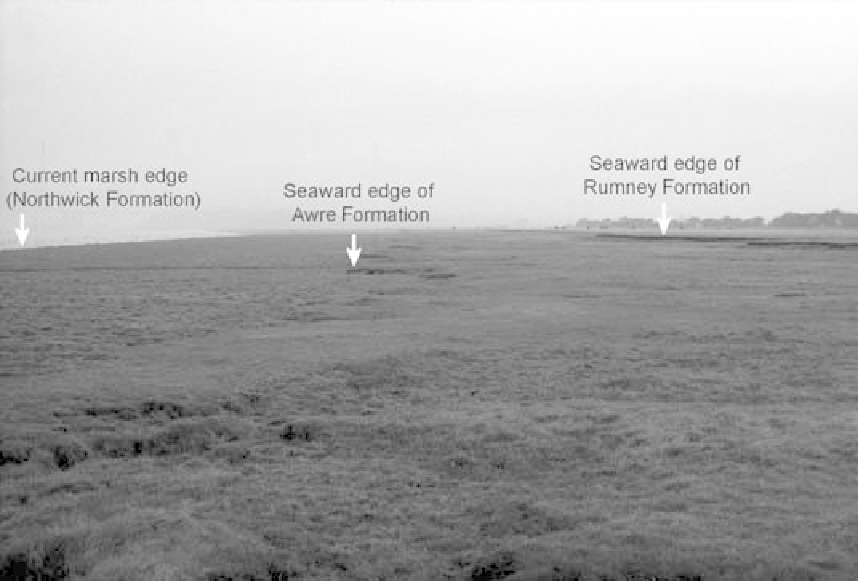Geoscience Reference
In-Depth Information
(c)
Case Fig. 7.1
(c) Stair-like descent of marsh surfaces towards the present channel. This image shows the vegetated surfaces of
(from right to left) the Rumney, Awre and Northwick sediments (marsh edges arrowed) (Littleton Warth, Severn estuary).
These sediments started accreting around 5000 years ago and represent a complex series of
different marsh units overlying each other, although the detail of this is difficult to determine at
the present time owing to limited exposure and almost uniform sediment type between different
marsh units (Allen & Rae 1987).
Much clearer, however, is the more recent morphology. The Wentlooge Formation continued
accreting until the end of the seventeenth century (Case Fig. 7.1a(ii)). By the early eighteenth
century, these marshes were eroding (Case Fig. 7.1a(iii)), remobilizing large volumes of sediment.
At this time, the quantities of pollutants reintroduced through this reworking were minimal
because this period occurred before the industrial revolution and, hence, the polluting of the
estuary. Erosion continued through much of the eighteenth century but by the early nineteenth
century rapid sediment accretion had resumed, leading to the deposition of the Rumney Formation
(Allen & Rae 1987) (Case Fig. 7.1a(iv)). These sediments were slightly coarser (silty clays rather
than clays) than those of the Wentlooge, suggesting a new input of silts to the system. Great
thicknesses of Rumney sediments were deposited, leading to the burial of the old Wentlooge
surface. This relationship can be seen in many marsh sections, such as those in South Wales
(Case Fig. 7.1b). Importantly with regard to the pollution history of the estuary, the accretion of
the Rumney Formation spanned the industrial revolution, meaning that the levels of pollutants
both in the estuary and stored in sediments were rapidly increasing (see Fig. 7.9). In addition, the
need to develop industry, agriculture and harbours was also increasing, leading to considerable
land claim in the estuary at this time. Hence the construction of sea walls (Case Fig. 7.1a(iv & v).





